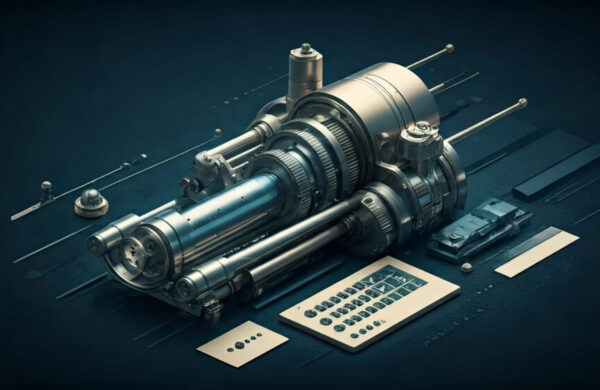Artificial Intelligence (AI) is transforming the construction industry, enhancing efficiency, safety, and precision in design processes. From Revit BIM Modelling to 3D rendering and automating clash detection, AI technologies are reshaping traditional construction methods. This blog explores eight key trends in AI-driven construction design, providing insights into how these advancements are revolutionizing the sector.
Top 8 trends
1. AI-Powered Design Optimization
AI algorithms can analyze vast datasets to create optimized designs, improving both functionality and aesthetics. With CAD designing services, designers can integrate AI tools to generate layouts that balance material efficiency, structural integrity, and sustainability.
These tools also suggest design improvements, making the process faster and more reliable. Integrating AI into Revit BIM Modelling enables seamless collaboration and design accuracy.
2. Enhanced 3D Rendering and Visualization
High-quality 3D rendering powered by AI allows architects and stakeholders to visualize projects before construction begins. AI-driven tools generate realistic images, considering lighting, textures, and spatial dynamics.
This trend is essential for improving client presentations and decision-making, ensuring that designs meet expectations before reaching the execution stage.
3. Automating Clash Detection in BIM
Clash detection has always been a critical part of construction design, ensuring that various systems (electrical, plumbing, etc.) work together without conflicts. AI is now automating clash detection within BIM dimensions, identifying and resolving design clashes more efficiently.
This automation reduces rework and project delays, saving time and costs while ensuring smooth project execution.
4. Generative Design Through Artificial Intelligence
Generative design, driven by AI, leverages advanced algorithms to explore multiple design solutions. By integrating AI into CAD designing services, professionals can input specific requirements, such as budget constraints or material preferences, and receive optimal design options.
This process accelerates innovation and ensures that designs meet functional and aesthetic goals.
5. Smart Project Management with BIM Dimensions
AI tools integrated into BIM dimensions provide smarter project management capabilities. From scheduling to cost estimation, AI predicts potential challenges and suggests solutions, ensuring projects stay on track.
With AI-enhanced Revit BIM Modelling, construction teams gain real-time insights, improving collaboration and decision-making.
6. Predictive Analytics for Construction Planning
AI’s predictive analytics capabilities analyze historical data to forecast project outcomes. These insights help in identifying potential risks, optimizing resource allocation, and planning more effectively.
Combining AI with 3D rendering and BIM dimensions ensures that the designs are both efficient and predictive of real-world challenges.
7. AI-Driven Sustainability in Construction Design
Sustainability is a growing focus in construction, and AI is playing a pivotal role in creating eco-friendly designs. Through AI-powered CAD designing services, architects can simulate energy usage and suggest design changes to minimize environmental impact.
Additionally, AI aids in material selection, ensuring that projects align with sustainability goals without compromising quality.
8. Advanced Collaboration Through AI Integration
AI enhances collaboration by integrating multiple tools, such as Revit BIM Modelling, 3D rendering, and automating clash detection. These integrations allow architects, engineers, and construction teams to work on a unified platform, reducing communication gaps and improving overall efficiency.
By aligning AI-driven technologies with BIM dimensions, teams can deliver projects faster and with greater accuracy.
Why AI is the Future of Construction Design
The adoption of AI in construction design is not just a trend—it’s a necessity for staying competitive in a rapidly evolving industry. From streamlining processes to enhancing design quality, AI’s impact is profound.
Tools like Revit BIM Modelling and AI-driven 3D rendering ensure accuracy and visualization, while technologies like automating clash detection eliminate costly errors. Moreover, AI’s integration with BIM dimensions and CAD designing services is paving the way for smarter, more efficient construction practices.
Conclusion
AI-driven construction design is revolutionizing how projects are conceived and executed. By embracing advancements like Revit BIM Modelling, 3D rendering, and automating clash detection, construction professionals can achieve unprecedented levels of efficiency and innovation.
If you’re looking to stay ahead in the industry, incorporating AI into BIM dimensions and leveraging cutting-edge CAD designing services is the way forward. Companies like Monarch Innovation are leading the charge in integrating Artificial Intelligence (AI) to redefine the future of construction.





